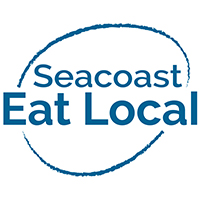 The nature of our agricultural system has been defined by government provision of agricultural subsidies. The U.S. government pays roughly $25 billion a year to farms, and this money is raised through taxes. I have always heard that subsidies benefit large farms and disadvantage small-scale, local producers, and have therefore been a critic of existing farm subsidies. Nevertheless, I didn’t know the specifics of these subsidies and so, I wanted to do some research to better understand how subsidies are allocated, and the resulting benefits and harms to farms, the environment and society.
The nature of our agricultural system has been defined by government provision of agricultural subsidies. The U.S. government pays roughly $25 billion a year to farms, and this money is raised through taxes. I have always heard that subsidies benefit large farms and disadvantage small-scale, local producers, and have therefore been a critic of existing farm subsidies. Nevertheless, I didn’t know the specifics of these subsidies and so, I wanted to do some research to better understand how subsidies are allocated, and the resulting benefits and harms to farms, the environment and society.
Agricultural subsidies first emerged as part of the New Deal, in the 1930s. The Great Depression slashed farmer income, thereby threatening the American food supply. The Agricultural Adjustment Act of 1933 was put in place to ensure that farms continue to produce and provide Americans with food. This program specified rules for production and created price protection, import limits and crop insurance. This seems to have been a very well-intentioned program, that was critical to the well-being of all of American society at the time of its invention. However, as time has passed, these programs have produced a number of societal and environmental harms. The programs have been altered some since the 1930s, but not as much as they should be to make the U.S. food industry fair, competitive and sustainable.
At present, there are eight categories of farm subsidies:
1. Insurance: government pays a portion of insurance premiums (about 60%) for farmers while also giving money to the insurance companies.
2. Disaster Aid: farmers are paid following natural disasters to compensate them for crop losses.
3. Agricultural Risk Coverage: government guarantees that farms make a benchmark amount of revenue per acre of farmland, and compensates them when they do not.
4. Price Loss Coverage: similar to ARC, this program guarantees that farmers get a certain price for the crops that they are growing.
5. Marketing Loans: farmers are paid when market prices drop.
6. Conservation Programs: farmers are paid to keep some of their land out of production.
7. Marketing and Export Promotion: government pays to advertise U.S. foods and products abroad.
8. Research and Other Support: government funds research and development for agriculture.
Thinking that farm subsidies only benefit large commercial farms, I assumed that these were the only farms that had access to subsidies, but this is not actually the case. The way in which subsidies fail small farms is a bit more complex. 10% of farms in the U.S. gross between 100,000 and $250,000, and are categorized as small/mid-sized farms. As of 2003, 82% of these farms were subsidized. Only farms with a gross income less than $1,000 or greater than $900,000 are ineligible for subsidies due to size. The amount of money that a farm receives is proportional to acreage, so large farms are subsidized more generously. The top 10% of farms, receive about two thirds of all subsidies. The issue is not that small farms lack access to subsidies but rather, that the largest farms receive an enormous and unnecessary sum of money through subsidies; the government is using taxpayer money to safeguard businesses that are not actually at risk of failure. This system gives the wealthiest food producers even more power, and makes it harder for smaller farms to compete.
On top of this, subsidy programs encourage farmers to implement methods that are harmful to the environment. Roughly two dozen crops are protected by subsidies, corn, soybean, wheat, cotton, and rice being the favored crops. Farmers are incentivized to choose from this limited collection of crops, which leads to monoculture and hinders innovation. It also means that farmers might choose to grow a crop for which their soil is not suitable, and are more likely to apply fertilizers because of it. Insurance subsidies guarantee that farmers get paid for all the crops they grow, whether or not there is a demand for it. This encourages overproduction and waste. These are just a few of the ways that agricultural subsidies may lead to environmental harm.
Surprisingly (to me), President Trump has recently proposed a $4.8 billion cut in farm subsidies. These savings would come from revising the crop insurance program: putting a $40,000 cap on funds allocated to individual farms for insurance premiums, and eliminating a policy that compensates crop losses at the highest harvest price rather than the expected price. Experts point out that these cuts are very small relative to the income of large farms and will have very little effect on their success and influence. However, this might be a step in the right direction and it will be interesting to keep an eye on.
Regardless of government policies, we as consumers still have the power to decide where we put our dollar. If you have the means, you should support local food producers that choose not to practice monoculture or use harmful fertilizers and pesticides. Seacoast Eat Local also offers a program to make local foods more affordable for recipients of food stamps. SEL’s market match program allows snap recipients to get twice the bang for their buck on the local foods at our winter farmers’ markets.
Sources:
2. https://www.
3. http://food-studies.net/
4. http://smallbusiness.chron.
